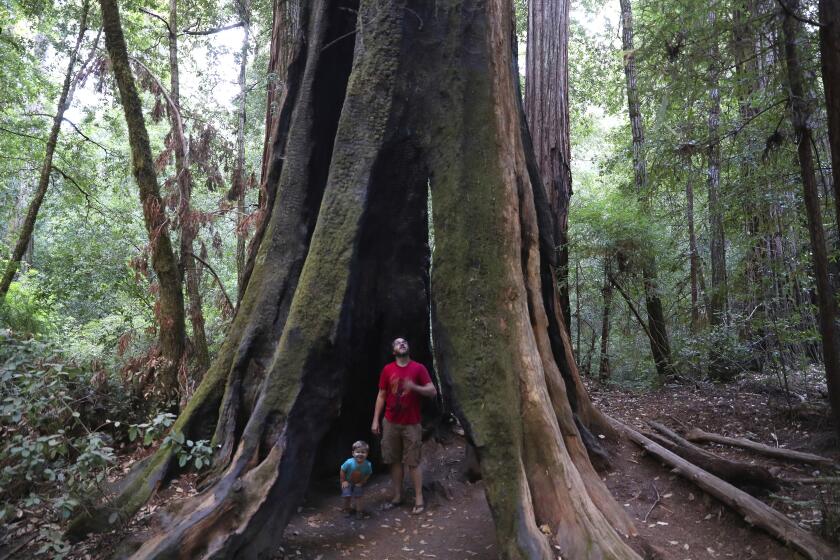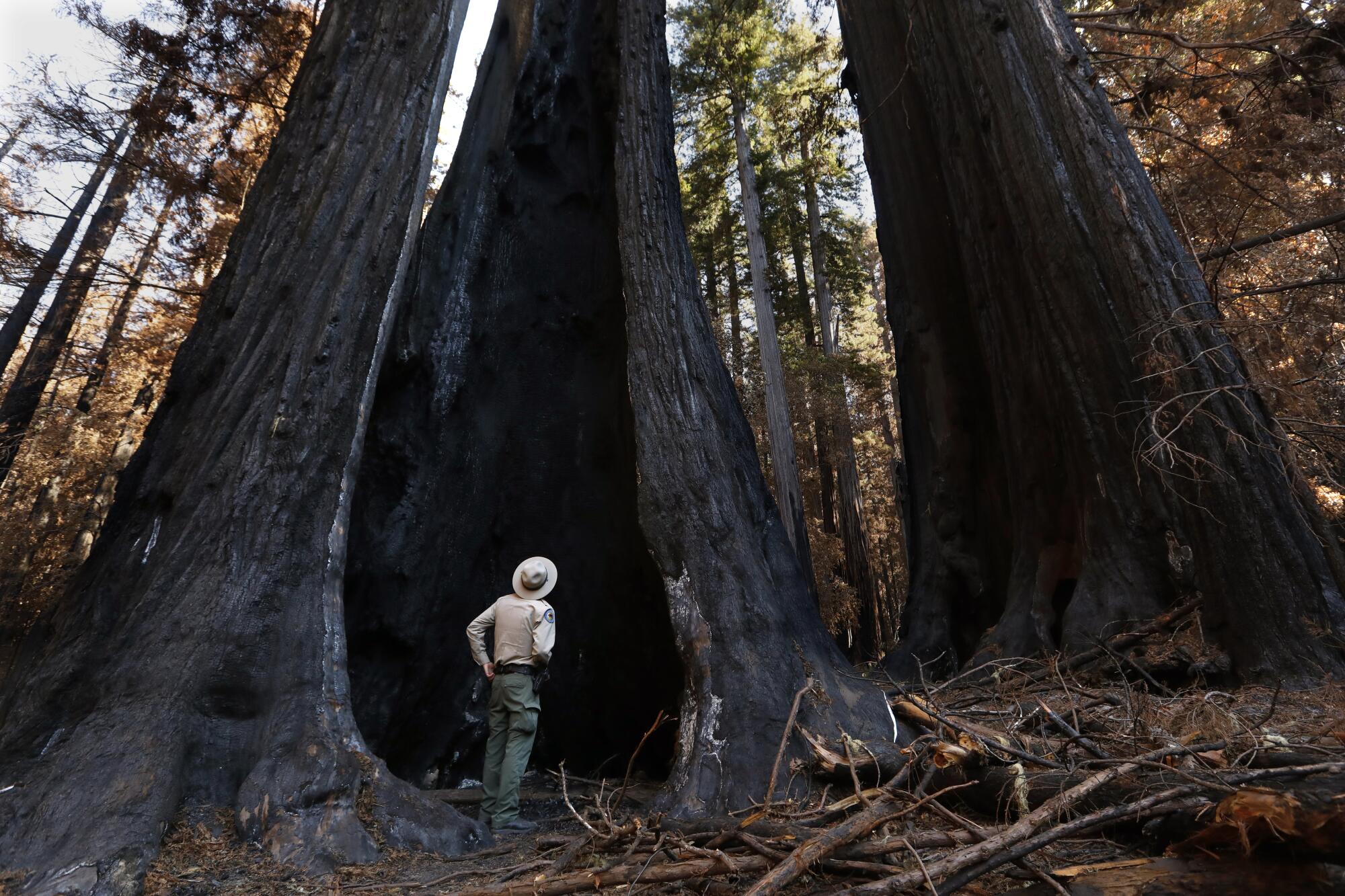
- Share via
BIG BASIN REDWOODS STATE PARK — When Big Basin fell victim to California’s record-setting wildfires this fall, at least one conservation group mourned its scorched landscape and questioned if the state park would ever recover.
Two months later, the park remains indefinitely closed, crews are working to clear “hazard trees” — those that could come crashing down — and the debate continues on whether its redwood forest can rebound as it did after past fires. Some scientists say California is entering uncharted territory with climate change, leaving coastal redwoods with conditions that are hotter and less foggy than before.
“We just don’t know what things will look like,” said Emily J. Francis, a forestry ecologist at the University of Texas who has studied Big Basin’s redwoods. “There are a lot of challenges, a lot of questions, and a lot of unknown.”
Big Basin is not just an expanse of redwoods where Californians have fond memories of hiking and camping. It is California’s first state park, created in 1902 to help launch a statewide movement to protect the state’s ancient redwoods. Its history could be seen in the park’s Headquarters Administration Building, built in 1936 by crews from the Civilian Conservation Corps.
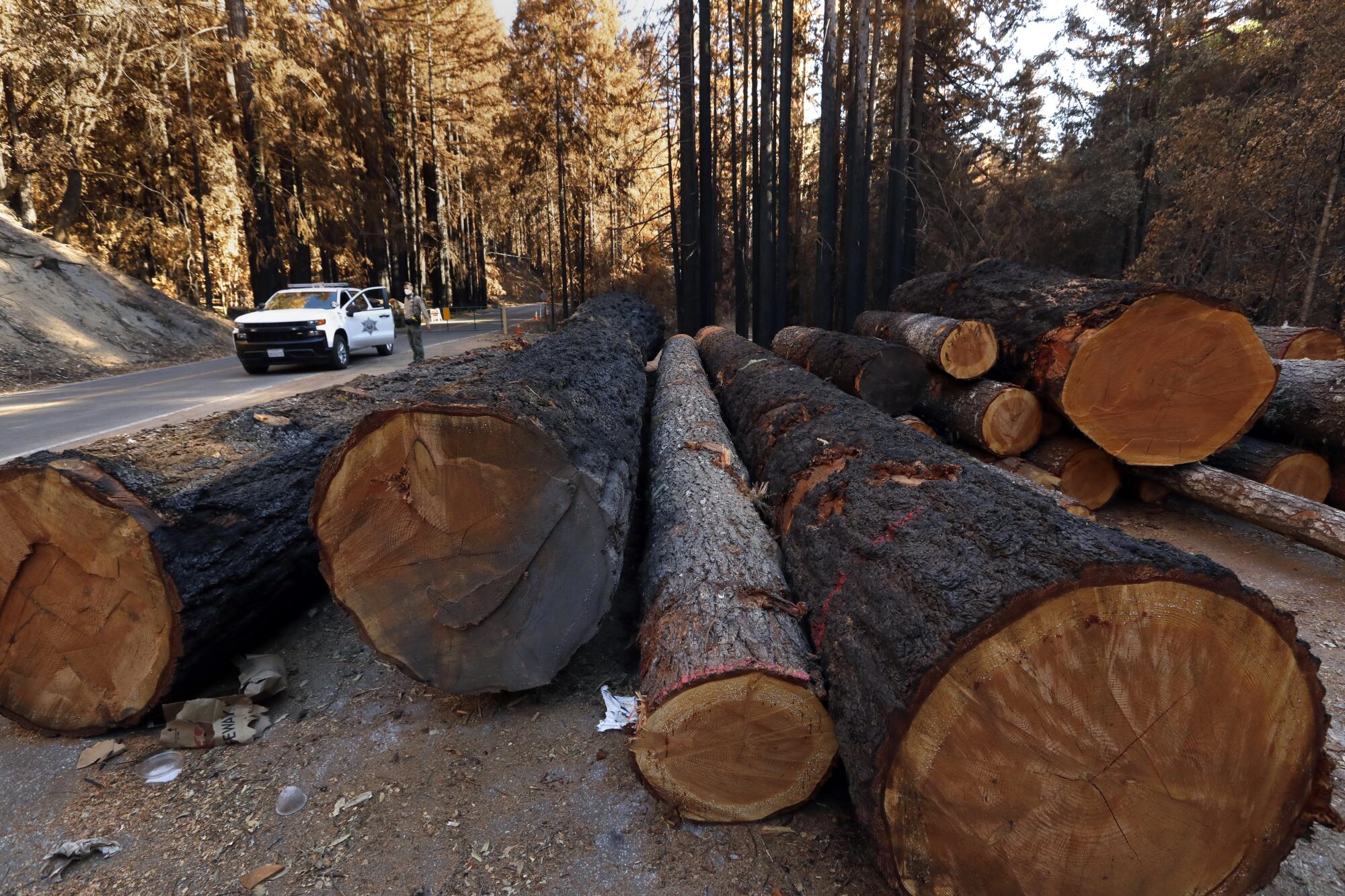
Now those headquarters and other structures have turned to ash. Hundreds of old- and second-growth redwoods burned, too — the centuries-old trees charred black and gutted.
During a recent visit, dozens of forestry crews could be seen felling, culling and logging trees along Route 236, the park’s major thoroughfare — roughly two months after the CZU Lightning Complex fire burned through the vast mountain expanse of coastal redwoods that separates Silicon Valley from the Pacific Ocean.
California’s oldest state park has suffered extensive damage from the C.Z.U. August Lightning Complex fires.
The park’s forest, once verdantly lush with green ferns and low-creeping brush under the canopy of the towering trees, was glaringly sunlit — brightened by the reflective light gray ash now carpeting the understory.
The park still smelled like a campfire, and small fires still burned in spots.
Savannah Rigny, a field technician for the environmental consulting firm Dudek, which has been contracted by the California Department of Transportation to assess the condition of trees along the roadway, pointed to a blue band taped around the base of a semi-scorched Douglas fir.
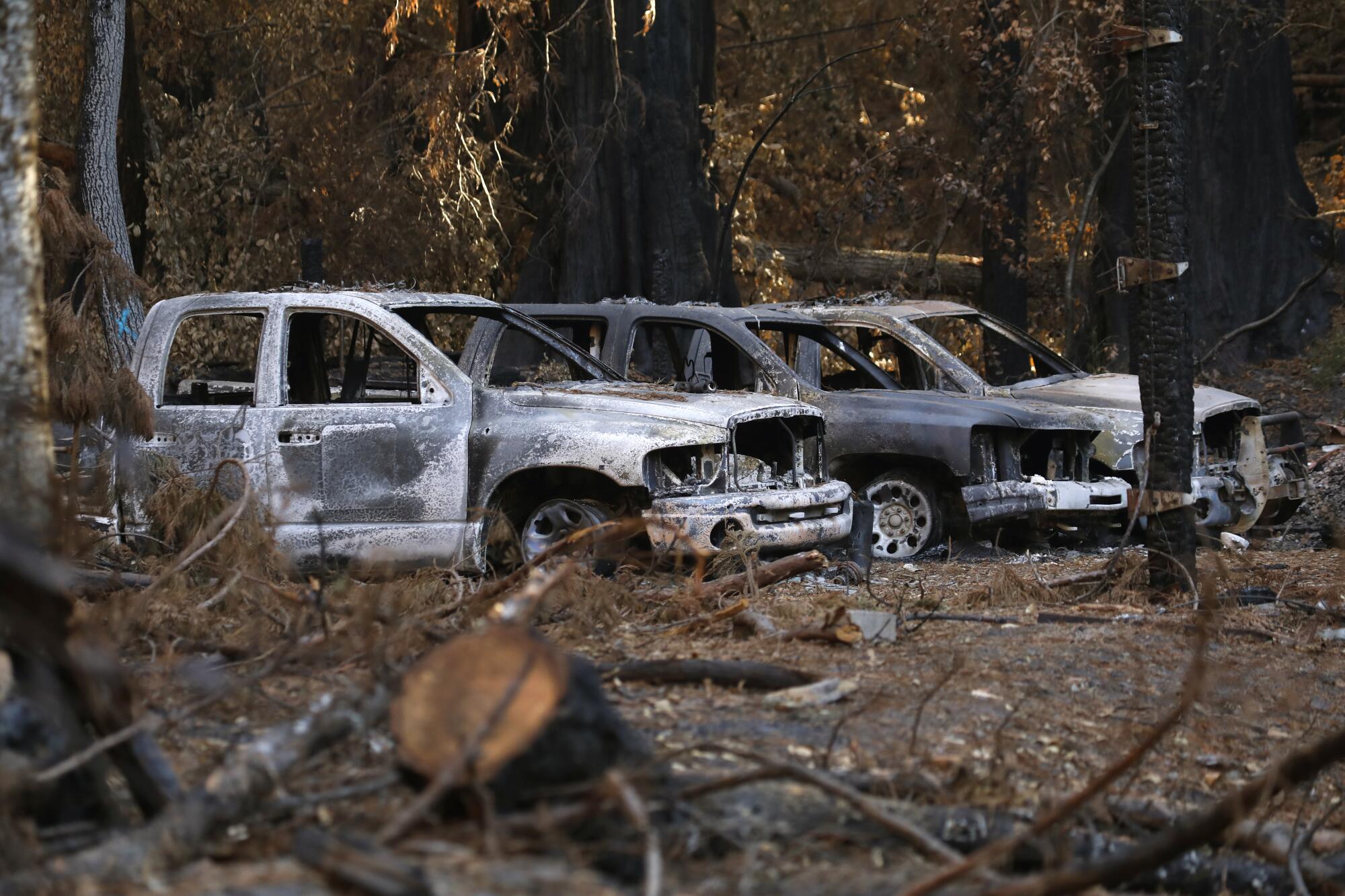
“That means it has to be removed,” she said, “but there’s enough harvestable wood to make it useful.”
Farther down the road, a logging crew was chainsawing the marked trees, which, in the case of some of the older and bigger ones, fell with deafening, thunderous claps — momentarily silencing the fat and gleeful woodpeckers, who’d been pecking away at the park’s nearly inexhaustible supply of dead trees, capturing tasty grubs and nutritious bugs.
Gabe McKenna, a state parks public safety superintendent, said the August fire burned roughly 97% of the park’s 18,224 acres. The park contains 4,400 acres of old-growth redwood forest and 11,300 acres of secondary growth. The rest is a mix of other forest types.
Noting that fire is a natural condition in these damp, coastal forests — and that dead trees provide an important habitat for a variety of animals, such as banana slugs, and plants — those that pose a risk to visitors and workers have to be removed.
“The initial assessment … showed that a large amount of trees will fall across Highway 236 in the near future if not removed,” he said. He added that environmental scientists with the state were working with contractors to “stress the importance” of these trees for the environment.
As the beep-beep-beep of a Bobcat tractor echoed up the roadway, Rigny noted that many of the burned trees she was assessing weren’t dead.
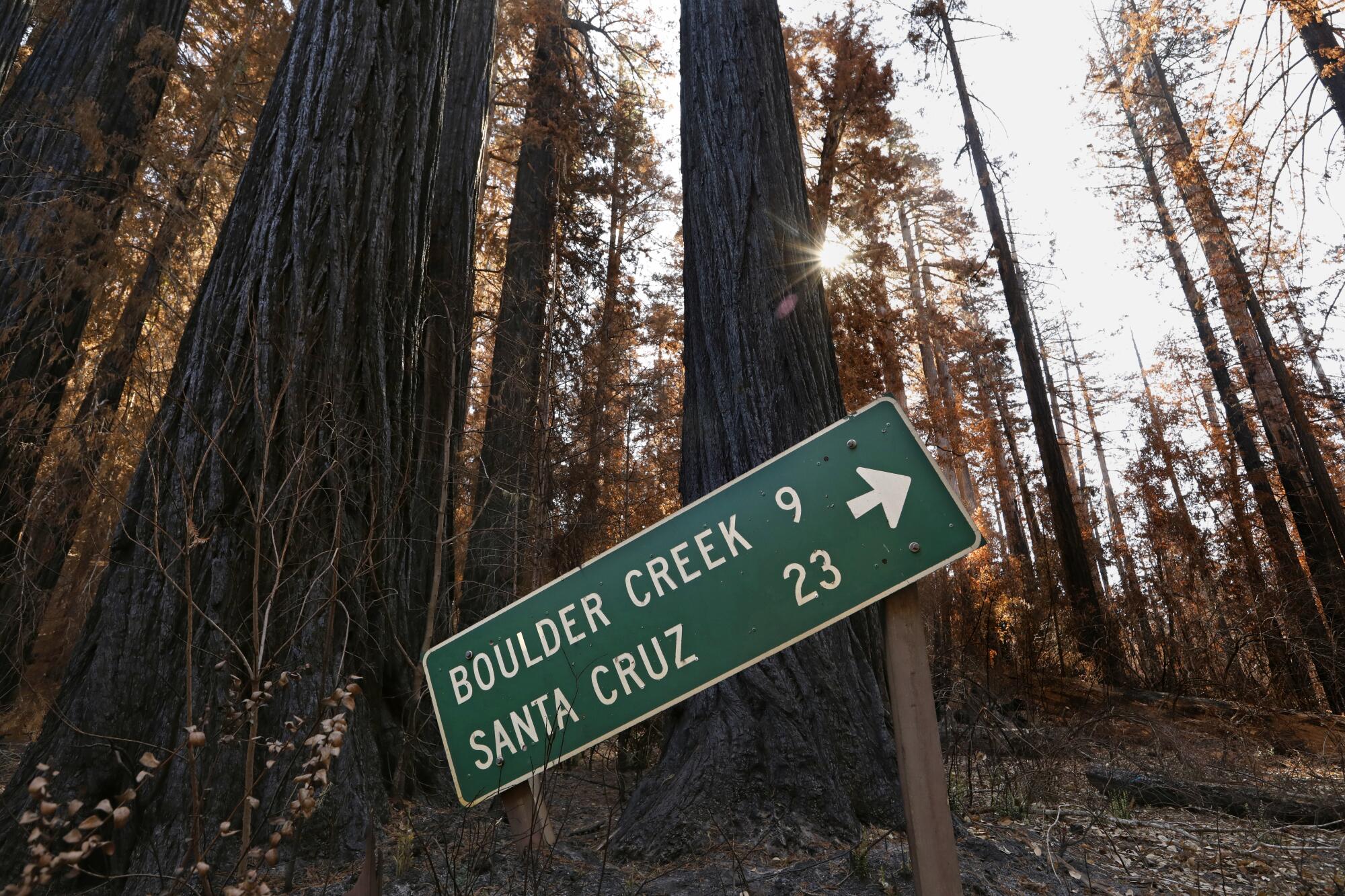
Drawing a visitor’s eyes upward, she pointed to clusters of green stems protruding from the trunks of massive, charbroiled redwoods near the road. She then motioned across the forest floor’s expanse, where green shoots and fronds poked through the carpet of silty, dusty ash.
“It’s coming back,” she said. “These forests are resilient.”
Burn scars on old-growth redwoods throughout the region indicate both past fires and fire resistance.
Newspapers, archival journal entries from European and American explorers, and oral histories from Indigenous peoples, including the Ahma Mutsun band of the Ohlone, also chronicle a history of the region steeped in fire.
In 1904, a huge conflagration burned through the park, said Dustin Mulvaney, professor of environmental studies at San Jose State University.
Mulvaney has been researching the area’s fire history, and said the CZU Lightning Complex fire moved through the park and mountains in the path of the 1904 blaze — following the same ridges and pathways.
“It’s the same places getting burned,” he said, noting the creep of this year’s fire along the park’s China Grade and Bonny Doon’s Empire Grade.
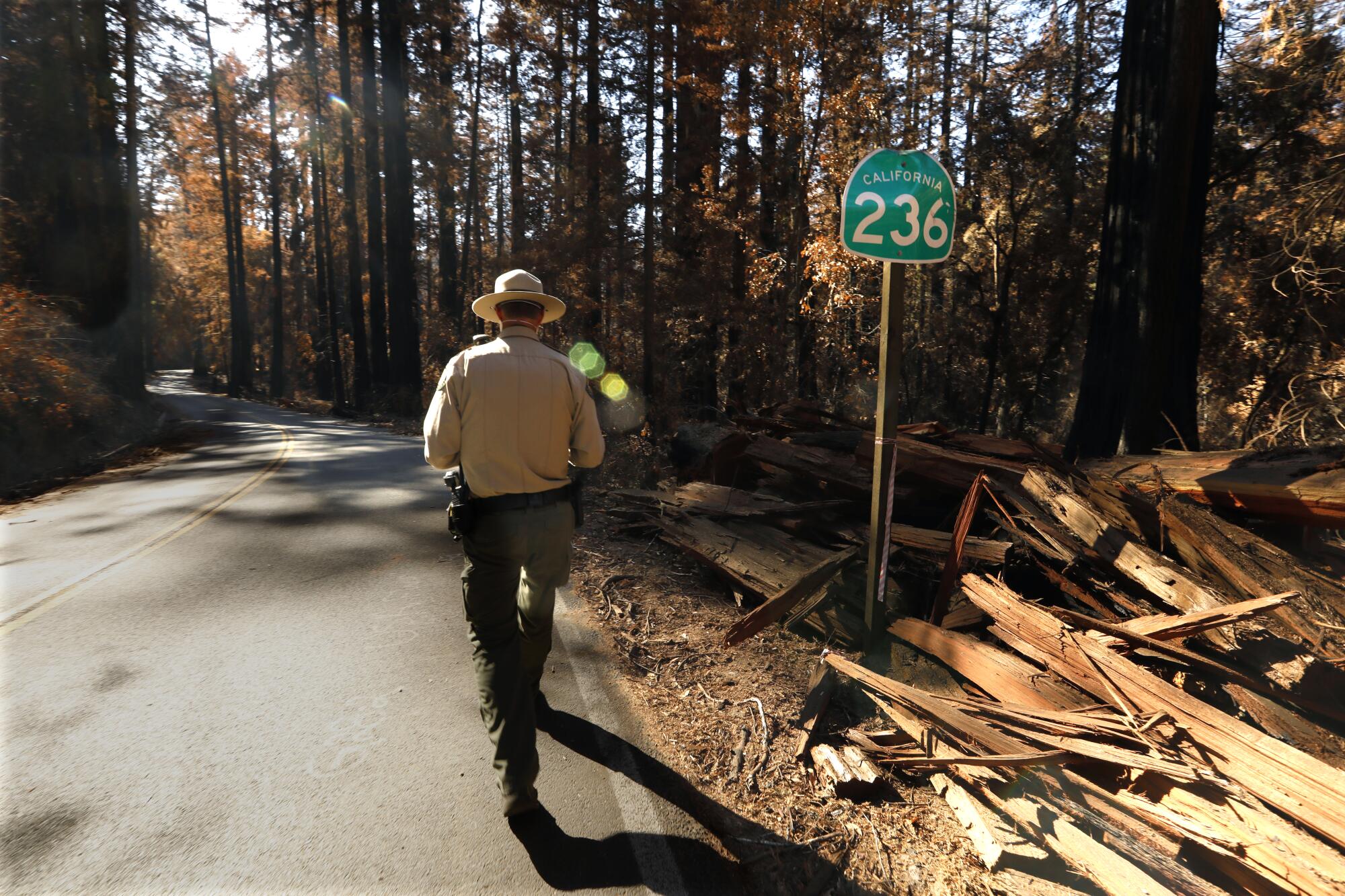
Mulvaney also referred to a Sept. 9, 1904, headline from the Santa Cruz Evening Sentinel, which suggested the 2-year-old park “seems to be doomed” after a major conflagration burned through the area, destroying park buildings and homes.
A major difference, though, was that before that 1904 fire, the area had been heavily logged — with downed lumber everywhere, and a fraction of the trees present today.
“But it came back,” he said.
The Sempervirens Fund, one of the oldest conservation organizations dedicated to redwoods, is less than certain the forest will fully recover. Immediately after the fires, the organization sent out a news release suggesting the park and its oldest redwoods were “gone.”
Matt Shaffer, the organization’s spokesman, said the initial reports out of the park were dire. But he is hopeful for the forest’s regeneration, noting there are many challenges ahead — not only for the rebuilding of the park and its structures, but also for the regrowth of trees and an ecosystem that evolved in a different climate.
“We need to do what we can, now, to shore up these forests for the long term,” he said, adding that, despite the encouraging signs of regrowth, “we’re not out of the woods, yet.”
The oldest of the old-growth redwoods in the mountains probably sprouted more than 2,000 years ago, into a forest nursery different from the one their descendants now face.
The climate is changing. In the Santa Cruz Mountains, temperatures are increasing, heat waves are becoming more common and prolonged, droughts are intensifying, and fog patterns are changing.
It was these very elements that turned the mountains into such a tinderbox this past summer, said Francis, the University of Texas researcher.
These trees “grew up in a climate that was well-suited to their ranges,” she said. “Meanwhile, the climate is changing in the background.”
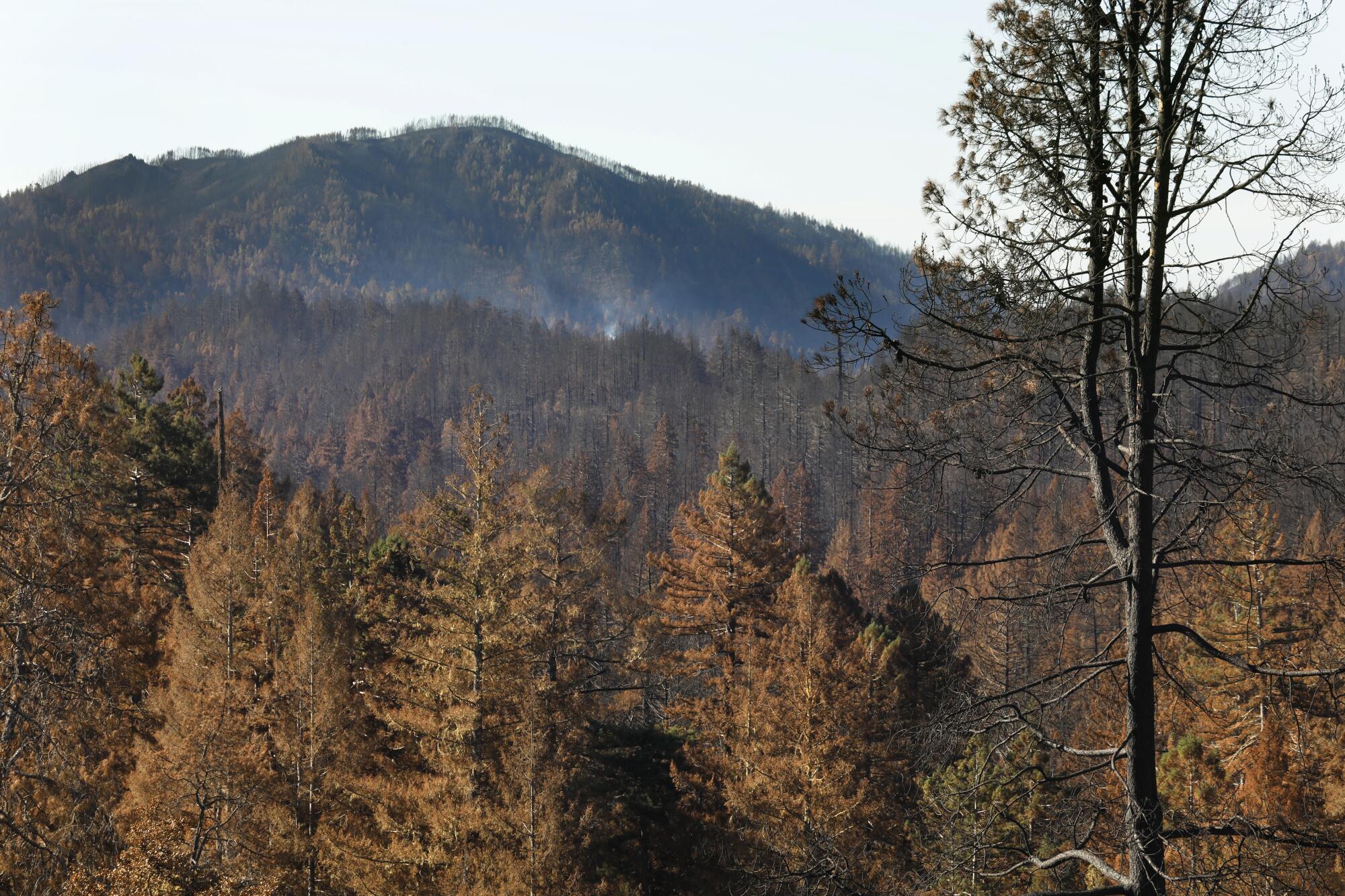
“I’m not sure the forest will look the same in the face of a changed climate,” she said. “These trees are adapted to fire, and fires that are not too severe can actually help redwoods outcompete other species like tanoaks. But we’ve totally changed the playing field for them. The fires are hotter, and the conditions under which the forests are regenerating are different than they were in the past.”
She also pointed to research showing that urbanization had raised the fog ceiling in areas, as well as a government study documenting a decrease in the number of foggy days. Fog is critical for redwood survival.
If there is no fog, or if it is “too high, the trees can’t access the moisture from fog drip,” Francis said.
And that’s a problem if climate change disrupts precipitation patterns, making droughts more common or intense; redwoods are drought-tolerant because they can siphon moisture from fog, she said.
Record heat. Raging fires. What are the solutions?
Get Boiling Point, our newsletter about climate change, the environment and building a more sustainable California.
You may occasionally receive promotional content from the Los Angeles Times.
The park is still closed to visitors, and McKenna said there were no immediate plans for reopening. In the meantime, crews are taking down hazard trees, with harvestable wood being sent to a mill for processing; the proceeds will offset the operation, said Kevin Drabinski, a spokesman for Caltrans.
Only a small number of redwoods came down, he said. And those will stay in the park for building restoration.
“We have a lot still to do to make sure it is safe for people to return,” said McKenna, the park ranger, noting that winter rains could add another hazard to the now-destabilized ground cover.
“It’ll take time,” he said. “But we’ll get there.”
